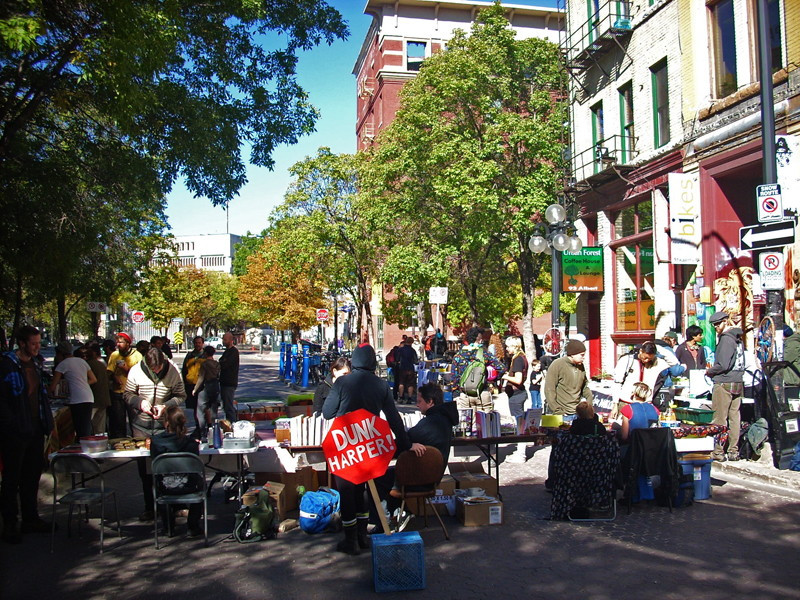A handbook for rebellion
Literature and theory are critical for effective activism
It is difficult to overstate the role of the written word in helping to form and foster the idealism that has sparked activism in our society.
Whatever the cause, be it climate justice, indigenous solidarity, labour activism, Palestine solidarity, feminism, etc., there is very often a book or books that have helped to shape the dialogue around today’s societal challenges and moulded today’s shit disturbers.
This literary dimension to activism is, I suppose, part of what has given rise to and sustained the Junto Radical Lending Library, the Mondragon bookstore, and Fernwood Publishing, not to mention the annual Anarchist Bookfair.
During last weekend’s Anarchist Bookfair in the A-Zone at 91 Albert St., a panel convened in which voices familiar to the activist and arts scene in Winnipeg were presented.
These individuals were there to share with their audience the “books that rocked their world.”
Had I been offered a seat at that discussion, I would have been tempted to suggest a very recent book published just this year by OR books. It’s called Beautiful Trouble: A Toolbox for Revolution.
As the title suggests, this 450-page volume is a comprehensive list of the various tactics and strategies at the disposal of people who wish to change the world. But more than that, the book brings into focus the various principles and theories underlying a specific action.
The section on tactics details the various forms of action we have all come to know well, and even a few that are more obscure.
The 31 tactics listed include mass street action, advanced leafleting, banner drops, petitions, occupations and “creative disruption.”
Complementing each entry is a list of the principles and theories behind the action, which are listed in separate sections in the book.
Principles are hard won insights that can inform a particular creative action as opposed to a theory, which is a big picture concept like capitalism or the motivation of peer groups that informs the way the world works and gives clues as to how it can be changed.
For example, “creative petition delivery” invokes the theories of “action logic,” where the purpose is immediately obvious to onlookers.
“Point of intervention” is where the action physically or conceptually disrupts the smooth functioning of a system. The key principle in play would be “making the invisible visible,” whereby an abstract issue is given a physical and visual presence.
Later in the book, a number of case studies are documented in which past actions are highlighted and viewed through the lens of tactic, theory and principle.
So, for example, in the case of the anti-WTO protests in Seattle in 1999, the key tactic was the blockade. It was animated by the principle of moving formerly fringe issues into the mainstream.
Theories underlying its success included revolutionary non-violence, points of intervention and action logic.
Complementing this entry is a “debrief” explaining what worked and what didn’t work.
In this instance, the breakdown of non-violent discipline allowed Black Bloc tactics of smashing and vandalizing property to trigger a violent response against all participants while giving the mainstream corporate media the ammunition “to tell the story they wanted to tell.”
There is no question that over the last couple of years, people working toward progressive change have had occasion to wonder if their selfless actions really are making a difference in the face of the re-election of a Winnipeg mayor and a federal government apparently hostile to their concerns.
The Occupy movement, the transition movement, the boycott of the forestry company Weyerhaeuser logging in Grassy Narrows First Nations territory, the fight against the deportation of Kimberly Rivera and other Iraq War resisters, the struggle to get proper funding for
Osborne House to protect women and children from abuse and so many other worthy causes require effective citizen mobilization.
A veteran organizer once told me there are two kinds of activism: the kind that makes you feel good, and the kind that actually ends up making a difference.
If you are of the latter persuasion, I believe you will find Beautiful Trouble an indispensible reference.
Michael Welch is a University of Manitoba science student and news director at CKUW 95.9FM.
Published in Volume 67, Number 4 of The Uniter (September 26, 2012)








